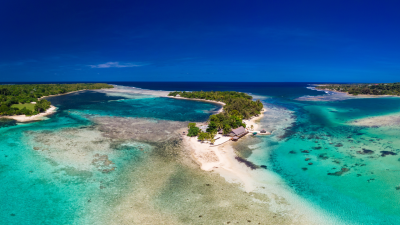Are we living in the Anthropocene, the ‘Human Age’, an era characterised by human impacts on the Earth? The International Commission on Stratigraphy (ICS) announced on 21 March 2024 that proposals to recognise the Anthropoceneas a new geological epoch have been rejected. Epochs are a formal unit of time on the geological timeline of the Earth. If approved, the recognition of the Anthropocene would have meant the end of the present epoch, the Holocene (which began at the end of the last ice age approximately 11,700 years ago; Nature). In the 15 years during which the proposal was under consideration before the ICS, the concept of the Anthropocene has entered popular culture and scholarly discourse to describe the effects of increasing and accelerating human impacts to the earth. Vidas was among the first to identify in 2011 the relevance of the Anthropocene concept for international law, arguing that the Anthropocene raises questions about the basis for (and ongoing utility of) the way that international law draws jurisdictional boundaries in the international law of the sea. The recent decision by the ICS presents an opportunity to reappraise the broader salience of the Anthropocene: if we are not – geologically-speaking – now living in the Anthropocene, then why does it matter for international law, and the law of the sea in particular?
Before answering that question, it is necessarily to return briefly to the ICS. As an institution, its primary objective is to ‘define precisely global units (systems, series and stages) of the International Chronostratigraphic Chart that, in turn, are the basis for the units (periods, epochs and age) of the International Geological Time Scale; thus setting global standards for the fundamental scale for expressing the history of the Earth’. While there are no published records of the ICS’ deliberations (or those of the Anthropocene Working Group of the Subcommission on Quaternary Stratigraphy, which made the proposal), reports indicate that experts were concerned about whether it was appropriate to fix the proposed beginning of the Anthropocene in the mid-20th century, a moment at which nuclear bomb tests left radioactive fallout across the earth. To some, ‘this definition was too limited, too awkwardly recent, to be a fitting signpost of Homo sapiens’ reshaping of planet Earth’ (NY Times). Indeed, some expressed the concern that proposing a single date for a new Anthropocene epoch might risk misrepresenting the scale and duration of human impacts on the earth, which should be considered as ‘a broader process, not as a distinct break in time’ (Nature).
Certainly, the geological imprint of human impacts on the earth was a key aspect of the earliest articulations of the Anthropocene. Predating its consideration within the ICS, the concept of the Anthropocene emerged in the early 2000s, in which it was described as a ‘human-dominated, geological epoch, supplementing the Holocene’ (Crutzen, 2002). Key characteristics of the Anthropocene include ‘biodiversity loss, changes to the chemistry of atmosphere and ocean, urbanization, globalization [and the] emerging Anthropocene world is warmer with a diminished ice cover, more sea and less land, changed precipitation patterns, a strongly modified and impoverished biosphere and human-dominated landscapes’ (Steffen et al). ‘Anthropocene’ has become ‘an unofficial scientific term referring to a human imprint on the Earth system’ (Vidas et al), in which ‘human influences become decisive in affecting the parameters of the Earth system accompanied by the potential to generate instability and even catastrophic shifts in the character of the whole system […] of the sort that are common in the planet’s deeper history, but unknown in recorded human history’ (Dryzek and Pickering).
This conception of the Anthropcene is broader, encompassing geology but within a wider focus on the Earth system, the ‘suite of interacting physical, chemical and biological global-scale cycles and energy fluxes that provide the life-support system for life at the surface of the planet’, including both geophysical forces and human activities (Steffen et al, 2007). Notwithstanding the ICS’ decision, it is this broader understanding of the Anthropocene which continues to have relevance in public debate, policy-making and scholarship, including international law scholarship. Indeed, in its statement announcing its decision, the ICS recognised that '[d]espite its rejection as a formal unit of the Geologic Time Scale, the Anthropocene will nevertheless continue to be used not only by Earth and environmental scientists, but also by socials scientists, politicians and economists, as well as by the public at large. It will remain an invaluable descriptor of human impact on the Earth system'.
It is in this broader sense that international law scholars have engaged with the concept of the Anthropocene. Stephens argues that ‘the Earth must be viewed as a single dynamic system with multiple intersecting environmental subsystems’, and that the Anthropocene challenges the traditional approach in international environmental law to address environmental issues within certain spaces (eg protected heritage areas) or certain subjects (eg types of pollution). Scott, examining the regulatory challenges of geoengineering, considers how such challenges are emblematic of a broader Anthropocene concern: that the ‘traditional distinction between humankind and nature and the characterization of the latter as something outside of, or other than, the human sphere no longer accurately reflects the relationship between humankind and the environment’. Hey draws connections between the underlying reasons for the emergence of the Anthropocene and the colonial legacy of international law, pointing to the fragmentation between international economic law and trade-based mechanisms in environmental agreements on the one hand, and human rights law and international environmental law on the other. These lessons from the Anthropocene remain salient for international law, notwithstanding the ICS’ recent decision.
As Vidas explains: ‘[s]howing relative stability throughout human history, the underlying condition of the Earth system has been taken as a given—and upon that premise our political structures were created. The relationship of international law with the observed geographical features and indeed the overall geological dimension of the Earth system has generally been confined to an implicit assumption about the undetermined, long-term horizon of current conditions—as an objective circumstance surrounding us since time immemorial’. The geographic instability of the Anthropocene touches on fundamental areas of international law. First, geography is central to the Westphalian system of inter-state law, including the notion that sovereignty rests on ‘exclusive authority over discrete parcels of territory’ (Bethlehem), and an understanding of statehood that is rooted in ‘defined territory’ together with a permanent population, government, and a capacity to enter into international relations (Montevideo). These matters are currently being examined in the International Law Commission’s study on Sea-Level Rise and International Law, and some States have begun to gesture at a reconfiguration of the relationship between geography and statehood, asserting the ‘general presumption that a State, once established, will continue to exist and endure, and maintain its status and effectiveness, and that international law does not contemplate the demise of statehood in the context of climate change-related sea-level rise’.
Second, geography is also central to allocation of sovereignty and sovereign rights over ocean spaces, manifest in the special role given to the nexus between land and sea under the international law of the sea. The land-sea nexus may be seen in the entitlement of coastal States to maritime zones (rather than all States), and in the way that maritime spaces are apportioned among States on the basis of particular characteristics of the land territory (combined with other elements, such as distance); in these ways, the land-sea nexus plays an important role in the legal architecture of the oceans that is charged with upholding the balance of interests that was struck in the negotiations of the UN Convention on the Law of the Sea. The International Court of Justice has arguably recognised the assumption of geographic stability in the process of maritime entitlement when it referred to ‘the attribution of maritime areas to the territory of a State, which, by its nature, is destined to be permanent’ (Denmark v Norway).
However, rising sea-levels are likely to lead to significant coastal erosion and inundation, especially for low-lying areas. If a coastal State’s entitlement to maritime zones flows from its land territory, will geographic changes to the coastline due to sea-level rise cause maritime zones shrink or be lost? This too, is under consideration before the International Law Commission. States, too, are increasingly expressing the position (see Pacific Islands Forum, and here) that established maritime zones may be preserved notwithstanding the effects of sea-level rise, pointing to the importance of ‘legal stability, security, certainty and predictability’ in underpinning a contemporary interpretation of the international law of the sea.
What does this mean for the land-sea nexus under the international law of the sea? Some (eg Arnadottir) have expressed concern that it signals a problematic departure from the principle that the ‘land dominates the sea’. Another possibility might be that it acknowledges that the rules of allocation predicated on geographical stability can no longer be relied upon to bring about stability in the ‘legal order of the seas and oceans’ (Preamble, UNCLOS). This logic no longer holds in the Anthropocene; geographic conditions can no longer ensure the achievement of legal stability. If confirmed, the potential legal effect of a collective (and potentially universal) interpretation that established maritime zones may be maintained despite sea-level rise offers a basis for the recalibration of the land-sea nexus for contemporary circumstances, namely the changing geographic conditions of the Anthropocene. This indicates a shift in the reference point for geopolitical stability in ocean spaces: rather than geographic stability, the legal stability of maritime zones might directly maintain the ocean’s spatial organisation and the balance of interests accommodated within it.
The Anthropocene thus exposes and unsettles the assumptions of geographic stability within the international law of the sea and its rules for the allocation of ocean spaces. Similarly, the Anthropocene sheds light on other key assumptions underlying international law – such as the divisibility of the environment, or the distinction between humankind and the environment – and demands response for the continued ability of international law to address real-world problems. While there is no formal avenue to review the ICS’ decision last month, proponents of the Anthropocene could seek reconsideration of the issue in 10 years’ time (after the mandatory cooling off period for such proposals before the ICS). The Secretary-General of the ICS also suggests there is also another way of looking at this issue within the scientific community, which would see the Anthropocene not as a geologic epoch but an event, ‘a looser term that can describe phenomena that unfold in multiple places at different times’. However, even though such scientific discussions show all signs of continuing for some time, there is little doubt that the concept of the Anthropocene will continue to remain salient more broadly, including within international law scholarship.
Dr Frances Anggadi is a Senior Lecturer at the Australian National Centre for Ocean Resources and Security (ANCORS), University of Wollongong, and a CIPL Visiting Fellow at ANU.



